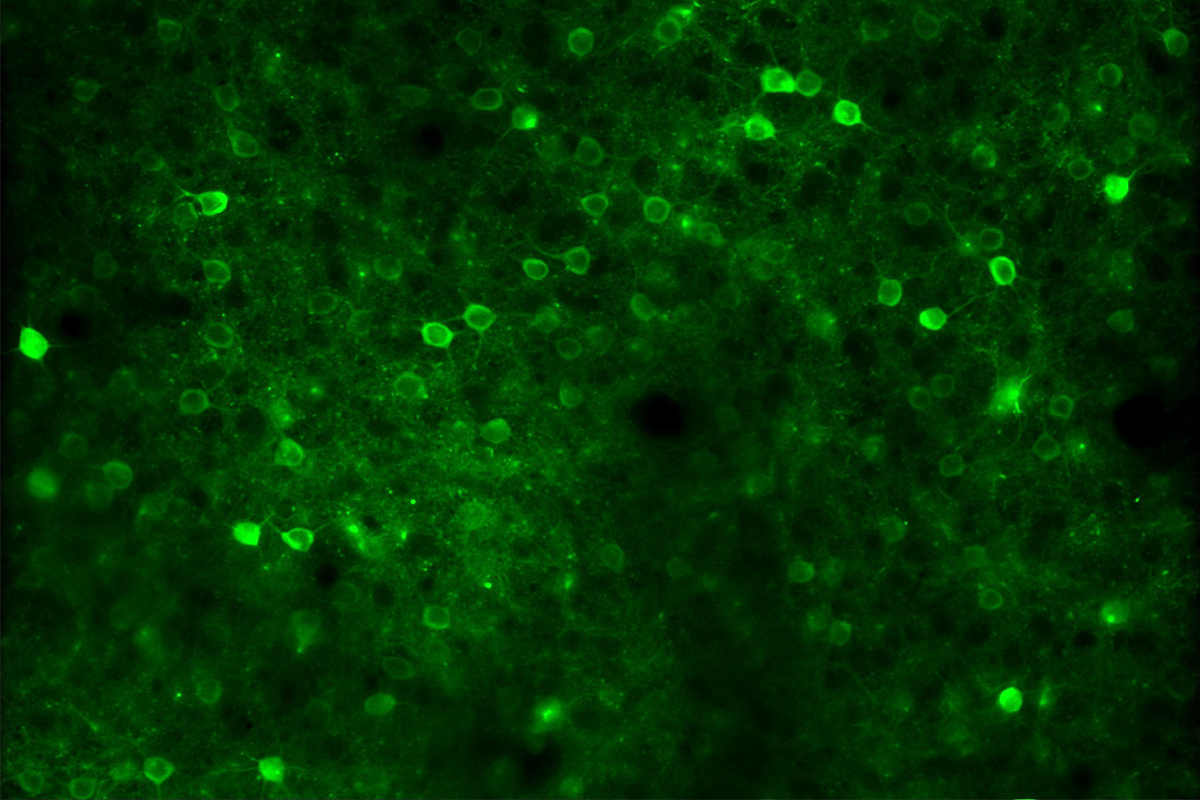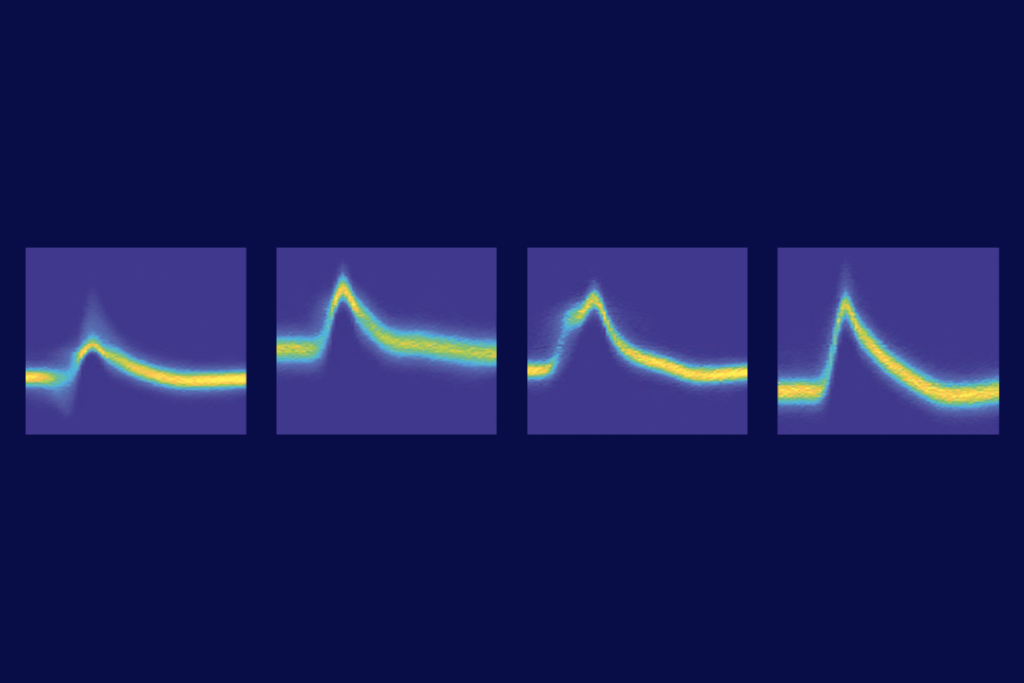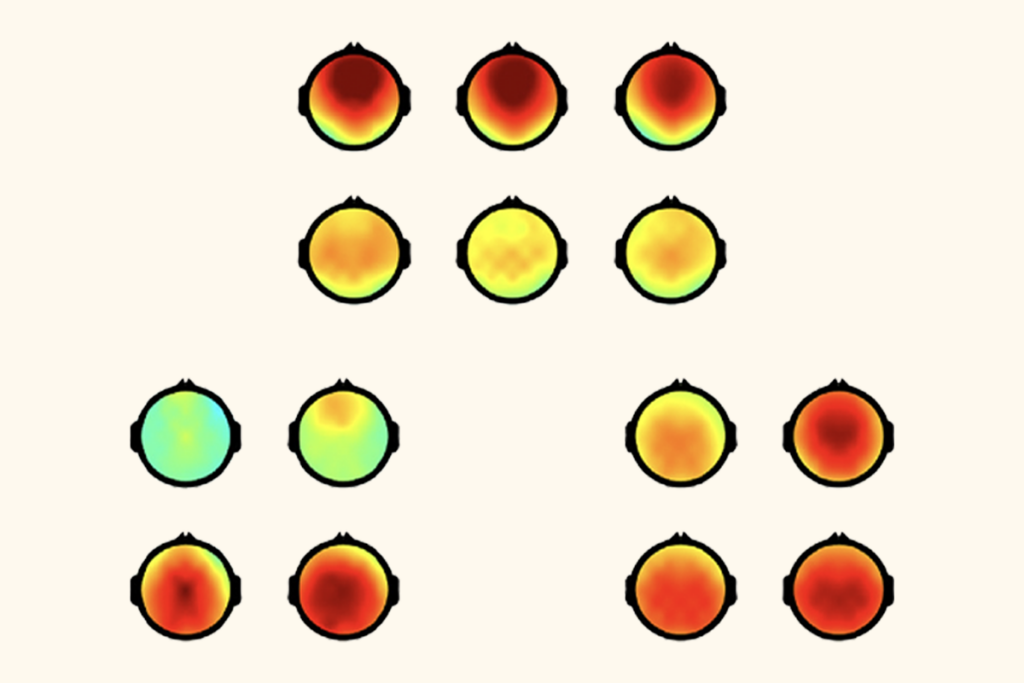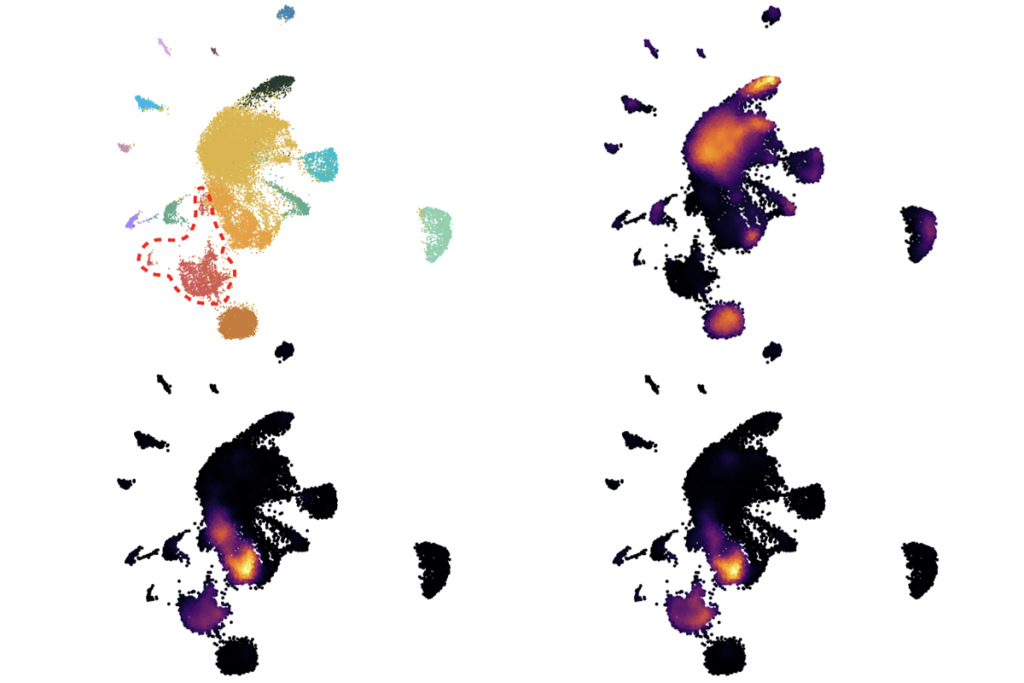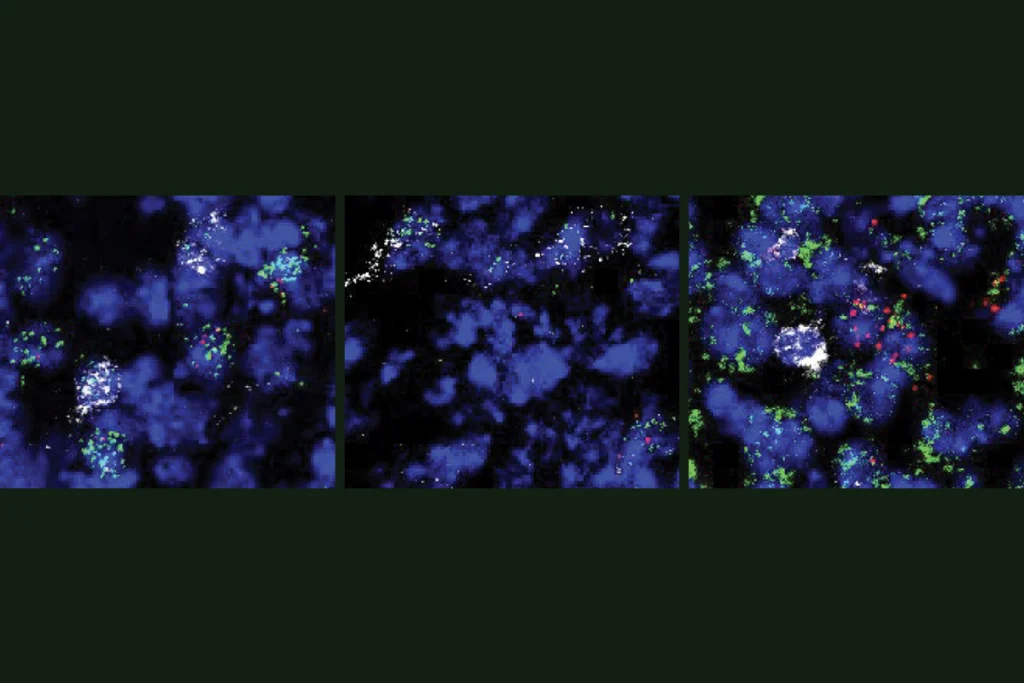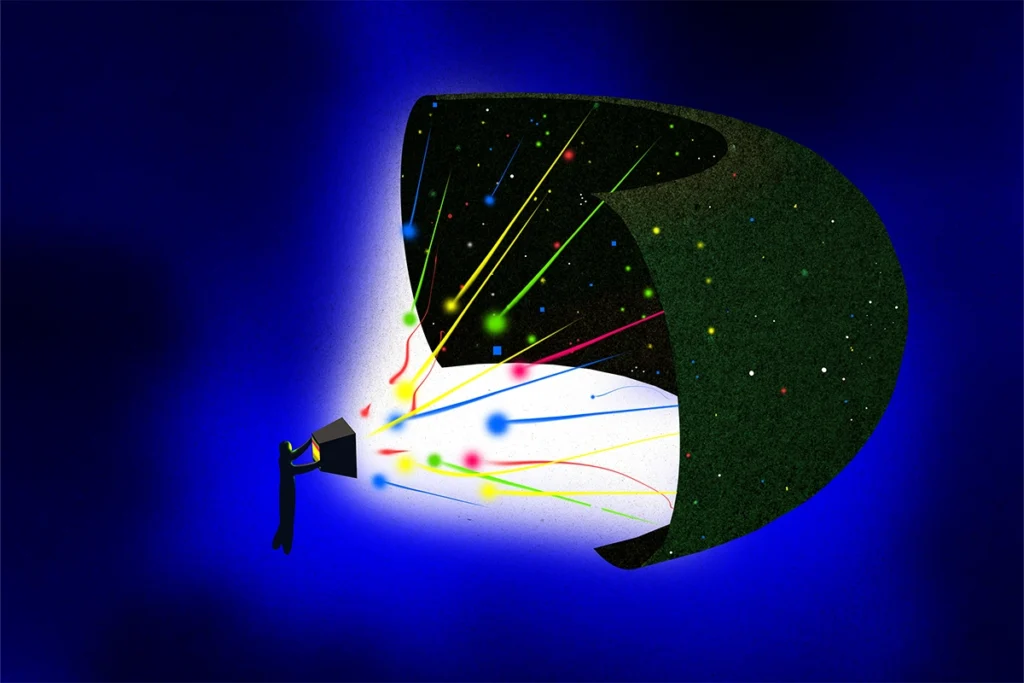Some neurons in the visual cortex are tuned to respond to particular visual stimuli, decades of research suggests. And that has led many to propose that brain regions that use visual cortex information to drive behavior give extra weight to the signals from those neurons.
But that’s not the case, at least in mice when they perceive objects in their surroundings, according to a new study that used holographic optogenetics to activate a subset of selectively tuned visual neurons. “We’re always taking imperfect measurements of the brain,” says study investigator Hayley Bounds, a postdoctoral researcher at Columbia University who did the work as a graduate student in Hillel Adesnik’s lab at the University of California, Berkeley. “It’s important to really get in there and change things and check if that actually does what you expected it to do.”
Adesnik and Bounds recorded activity in the visual cortex of mice trained to lick a water spout only when they saw tilted lines appear on a screen. From the recordings, the team identified which neurons activated when the lines appeared. When the researchers then used holographic optogenetics to activate those same neurons or a random set of visual cortex neurons, the mice performed the task equally well. But the more visual cortex activity the visual stimulus caused, the better the mice were at the task—suggesting that downstream brain areas read out all neuronal signals instead of prioritizing certain ones.
The results challenge the long-standing dogma “that the neurons that fire the most are the most important for some behavior or perception,” Adesnik says.
The team could look downstream of the visual cortex to see which brain regions are doing the readout—and whether those regions vary depending on what the brain is asked to do, says Nick Steinmetz, associate professor of neurobiology and biophysics at the University of Washington, who was not involved in the work.
“It’s a really important question to try to understand which of those pathways are dominant in different tasks and different contexts,” Steinmetz says. “This study sets them up to be able to ask that really nicely.”
ASTROCYTE DEBATE, REVISITED
April’s issue of this newsletter highlighted an ongoing debate about astrocytes. It centered on whether astrocytes can retain memories of diseases and injuries, as suggested by a 2024 study led by Francisco Quintana, professor of neurology at Harvard University. The study shows that astrocytes in mice and people express increased levels of pro-inflammatory genes after exposure to molecules that promote inflammation. A reanalysis of that study’s data, posted in April as preprint by Shane Liddelow, associate professor of neuroscience and physiology at New York University, questioned whether immune cells inadvertently included in the samples had actually expressed those genes.
The 2023 results stood when Quintana’s team analyzed astrocytes in five mouse models and several new independent datasets, according to a preprint posted on bioRxiv on 3 June.
“It’s something that probably needed more clarification,” Quintana says.
Neither group plans to pursue the issue further, both Quintana and Liddelow told The Transmitter, though Liddelow says the June preprint does not fully address the questions his team raised.
